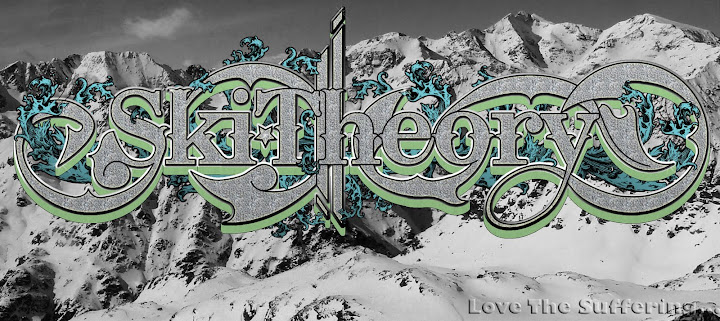So after breakfast, and time to digest, we jumped on the bus and headed down the Andorra Valley to Grau Roig where the race starts. The course starts above the village at 2150m, with the first climb ascending up 630m, to Montmalus summit perched at 2780m. The time we spend here in the mountains is yet another important portion of our preperation, as acclimatizing to the altitude (although not high), will be crucial to racing faster than if we were to be at sea level.
Starting the day skinning up, we got some good beta from Manuel Perez Brunicardi of all people. Mireia Miro, who just came top five in the World Cup in Italy last week, was out checking the course as well. We kept the recovery pace making sure to not get sucked into hammering with the worlds best, and blowing our training/race schedule. (Photo Above: Individual Course elevation profile)
The course starts out low down near the lifts at 2150m, and climbs a low to moderate angle which remains consistent the entire way through the course to the summit of Montmalus Peak. The summit of Montmalus is where the first skin transition will take please, where you drop off the front side down to the flats at 2300m, to the second transition. (Photo Left: James and Stano midway through the first climb to Montmalus Peak)
After the second transition, skinning up there is a quick bootpack to the top of Collada Oest (2700m), transition, and a fast descent down to the Refuge de Muntanya hut. A note for all racers, it's a bit rocky top, and the snow is variable. The bootpack, not pictured, is a straightforward chute, with some rocks peppered throughout it. (Photo Right: Looking down the first descent from the transition)
From the hut a speedy mellow but really fast skin track brings you back to the top of Montmalus, where the 5th skin transition is, dropping down a small alpine bowl to lower treeline. The descent is full of breakable crust, soft slab, and rocks to launch off of unexpectedly, to the 6th skin transition. (Photo Above: Taken from the Refuge de Muntanya hut, where the 4th transition is.)
(Photo Above: Second last descent back to treeline, rocky and lots of breakable crust.)
The last climb winds up the side of a sub ridge of Serra Seca (2730m), which is broken up with a quick rocky bootpack. The bootpack is thin, but feels really fast, especially in the wind-packed snow. Getting to the 7th transition on Serra Seca, we dropped down the last descent ramp, discovering that not only the snow was going to be interesting racing down, but that someone had triggered a hard slab avalanche (sz 1.5, crown approx 70cm, appeared to have failed on depth hoar, steep rocky and shallow start zone) on the course. (Photo Below: Sub ridge and course profile on Serra Saca)The course is beautifully designed and well thought out. It begins and starts in the same location, and will allow spectators to view most of the course from easily accessible areas, as well as the ski resort base. We're definitely learning the difference between race courses on the World Cup, and North American courses! Stoked to race!













Sweet Alex, nice work.... although you're starting to make me guilty for all the eating and espresso drinking I've been doing in Barcelona.....
ReplyDeleteDon't feel bad, your just focusing on nutrition, and the coffee is time zone acclimatization. We've been doing the same!
ReplyDelete